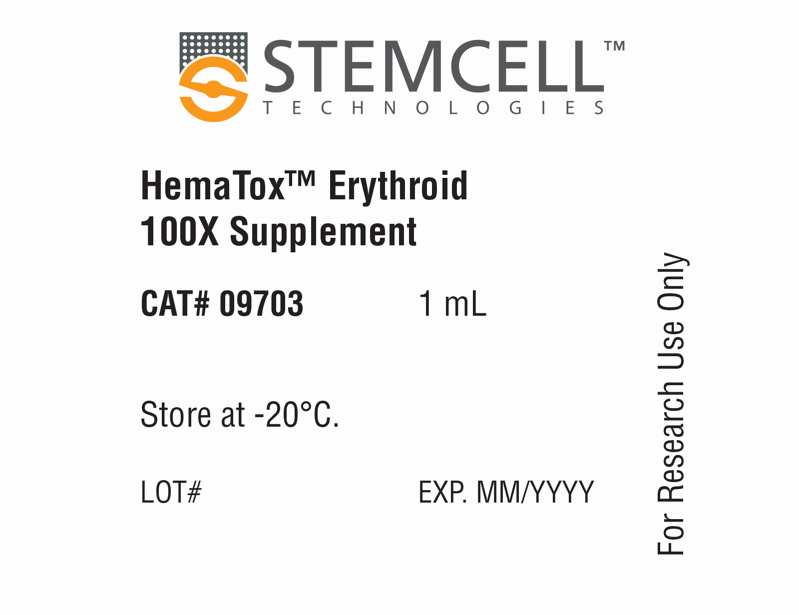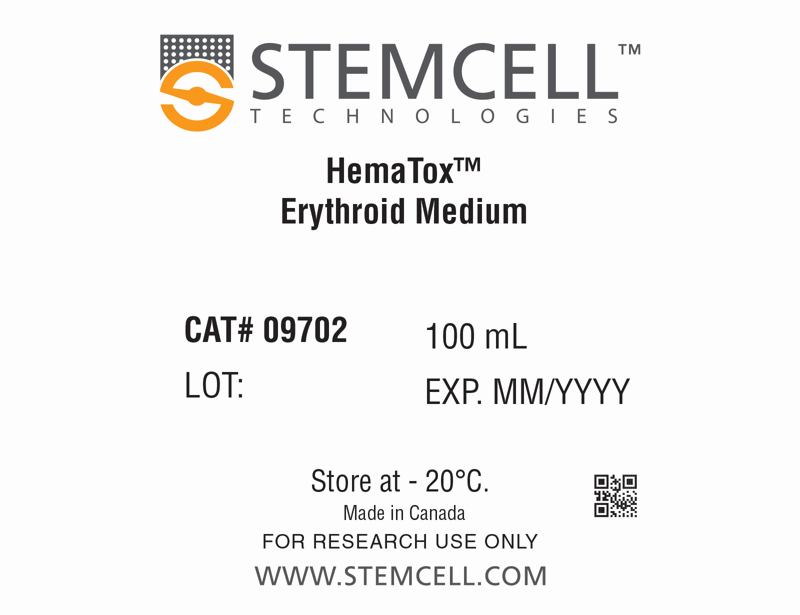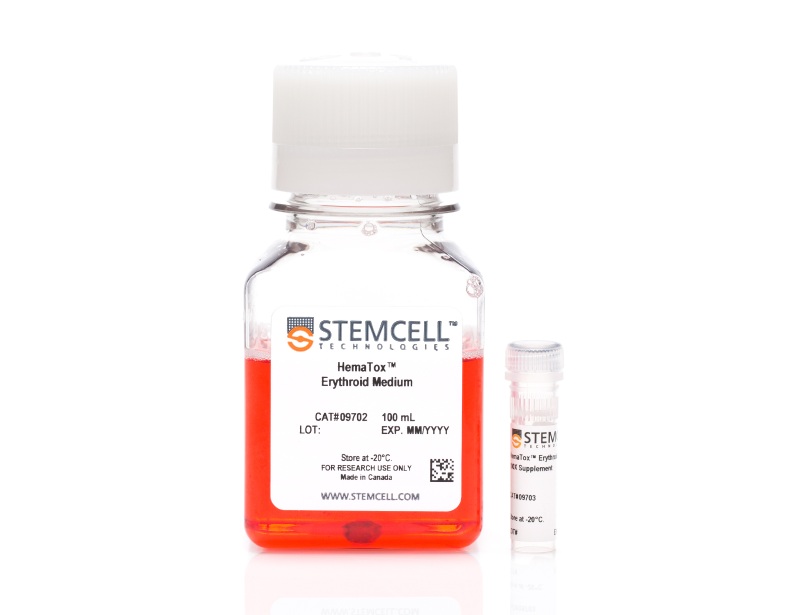HemaTox™ Erythroid Kit
HemaTox™ Erythroid Kit includes a specialized serum-free culture medium and 100X supplement. Complete HemaTox™ Erythroid Medium (HemaTox™ Erythroid Medium + HemaTox™ Erythroid 100X Supplement) promotes the proliferation of human CD34+ HSPCs and their differentiation into erythroid cells during a 7-day culture period. After culture, the cells can be counted and assessed for expression of erythroid markers such as the transferrin receptor (CD71) and Glycophorin A (GlyA, CD235a) using flow cytometry or other methods.
HemaTox™ Erythroid Kit may be used on its own or in combination with HemaTox™ Myeloid Kit (Catalog #09704) or HemaTox™ Megakaryocyte Kit (Catalog #09707) to assess lineage-specific drug toxicity in parallel.
Each kit contains sufficient medium and supplement for testing up to 160 different conditions (triplicate wells per condition, 200 µL per well) in 5 x 96-well plates.
- HemaTox™ Erythroid Medium, 100 mL
- HemaTox™ Erythroid 100X Supplement, 1 mL
| Document Type | 产品名称 | Catalog # | Lot # | 语言 |
|---|---|---|---|---|
| Product Information Sheet | HemaTox™ Erythroid Kit | 09701 | All | English |
| Safety Data Sheet 1 | HemaTox™ Erythroid Kit | 09701 | All | English |
| Safety Data Sheet 2 | HemaTox™ Erythroid Kit | 09701 | All | English |
Data
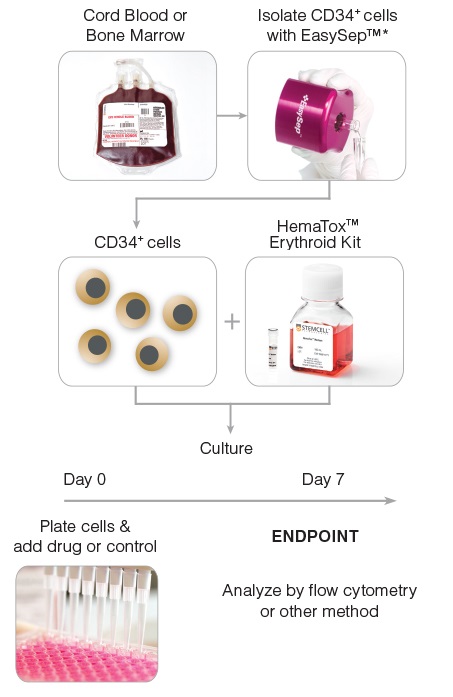
Figure 1. General HemaTox™ Erythroid Kit Procedure
*The cell isolation step may be omitted if pre-enriched CD34+ cells are used.
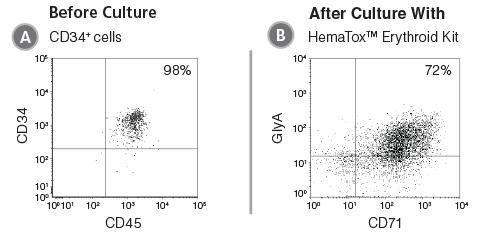
Figure 2. Flow Cytometry Plot Showing Erythroid Cells Produced After Culture of CD34+ HSPCs with the HemaTox™ Erythroid Kit
(A) Human CB CD34+ cells were cultured with the HemaTox™ Erythroid Kit using the protocol as written in the Product Information Sheet (PIS). (B) After the appropriate culture period, cells were harvested and stained for cell surface proteins expressed on erythroid (CD71 and GlyA) cells.
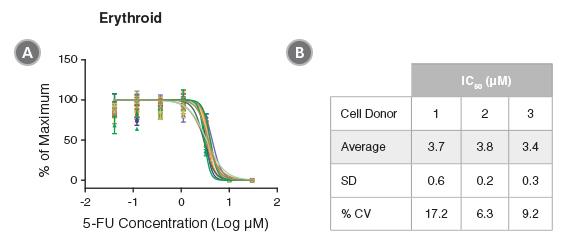
Figure 3. Reproducibility of HemaTox™ Erythroid Kit Results Between Experiments and Using Different CD34+ Cell Preparations
(A) Dose-response curves were generated from titrations of 5-FU added to human CB CD34+ cells isolated from 3 donors and cultured with the HemaTox™ Erythroid Kit. Three to five separate experiments were performed with cells from each donor. In each assay similar IC50 values were obtained with cells from different donors and in different experiments with cells from the same donor. Shown are values normalized to the percentages (%) of maximum cell growth without drug. Despite differences in absolute cell counts, curves are reproducible when normalized within each experiment. (B) Table showing IC50 values generated for 5-FU in culture with the erythroid kit including standard deviation (SD) and the coefficient of variation (% CV) across experiments.
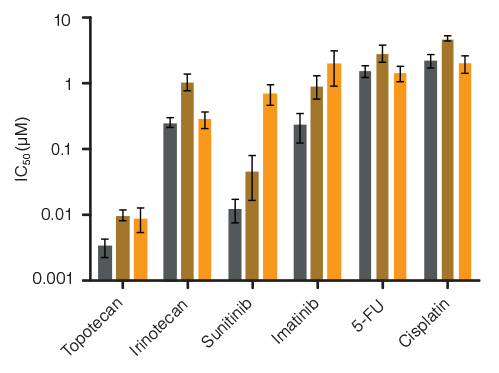
Figure 4. Lineage-Specific Differences in Hematotoxicity Identified with HemaTox™ Erythroid, Myeloid and Megakaryocyte Kits
Results show average IC50 values for each drug tested on human BM CD34+ cells using the HemaTox™ Erythroid (grey), Myeloid (gold) and Megakaryocyte (orange) Kits. Most drugs show similar toxicity for each lineage but some, such as Sunitinib, are ~100-fold more toxic for erythroid than for megakaryocyte progenitor differentiation with intermediate toxicity for myeloid progenitor differentiation. Vertical lines indicate standard error of the mean (SEM) (n = 4 - 8).

